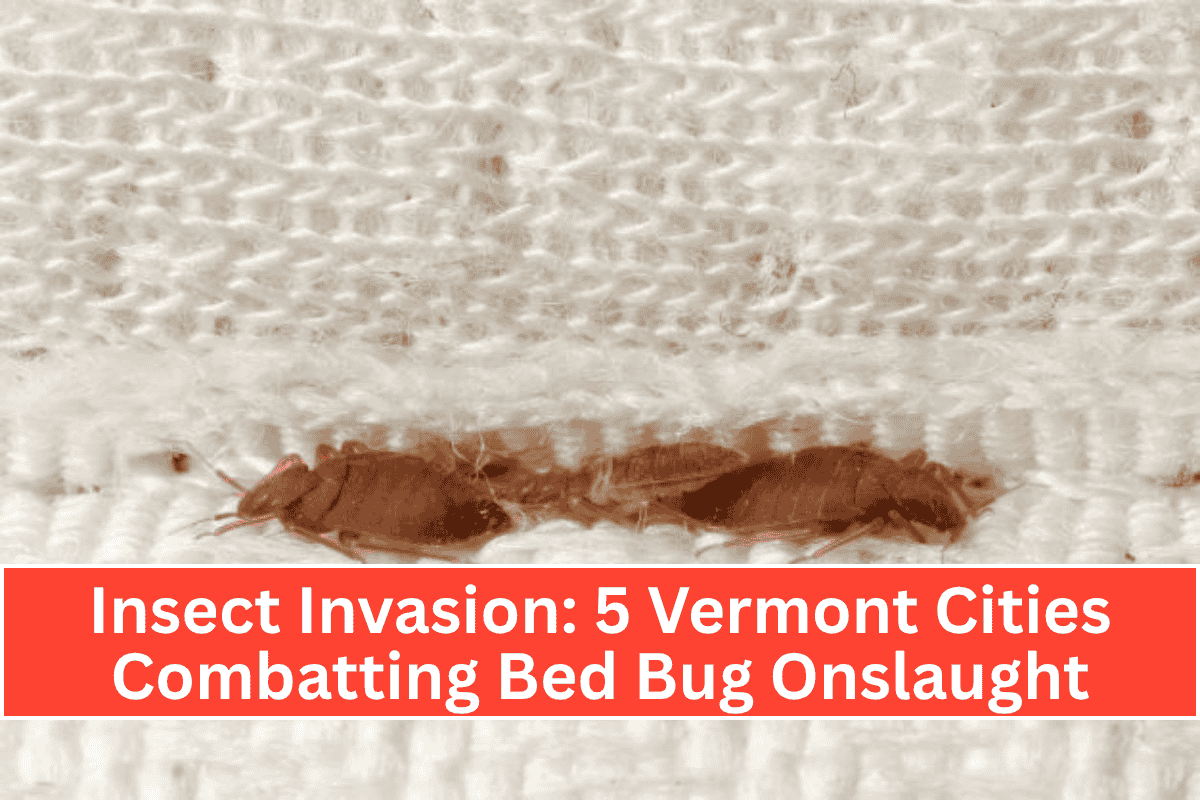Recent reports of a bedbug infestation in a Winooski apartment building have brought attention to a growing issue in Vermont. According to WCAX, bedbug infestations in the Green Mountain State have been steadily increasing since 2005, with cases of both infestations and exterminations on the rise.
Experts attribute the growing issue to a combination of factors, including a lack of knowledge about prevention, increased travel, and the bugs’ growing resistance to pesticides, as reported by the Environmental Protection Agency (EPA).
While these pests are a nuisance, there is some good news: bedbugs don’t transmit disease, according to the Vermont Department of Health. Fortunately, there are effective ways to control and prevent bedbug infestations. Here’s what you need to know to protect your home.
How to Spot and Prevent Bedbug Infestations
Bedbugs are notorious for being hard to eliminate. They can survive for months without food or water, making them resilient. The key to prevention is stopping them from entering your home in the first place.
Identifying Bedbugs
Bedbugs are not microscopic, but they can be tricky to spot as they often hide in cracks in furniture, walls, and floors. Here’s how to identify them:
Adult bedbugs are roughly the size of an apple seed and have rusty-red, flat bodies.
They are most active at night when you are sleeping.
After feeding, bedbugs swelling in size and turn a brighter red.
Bedbug eggs resemble poppy seeds.
How Bedbugs Travel
Bedbugs are hitchhikers, easily moving from one area to another. They can cling to furniture, bedding, luggage, and clothing, making it easy for them to spread across places like hotels, airports, or used furniture stores.
Here are some tips from the EPA to prevent a bedbug home invasion:
Check secondhand purchases (furniture, clothing, bedding) for signs of bedbugs.
Use a protective cover on mattresses and box springs.
Vacuum frequently and reduce clutter in your home to limit hiding places.
Use plastic bags when transporting laundry, and wash it in hot water followed by a high-heat dryer cycle.
Symptoms to Watch For
Bedbug bites typically result in small, itchy red bumps on the skin. Some people may not react at all to bites, while others may experience more severe reactions, such as:
Skin rashes, hives, and blister-like inflammations.
Groups of swollen sacs of pus.
It’s important to avoid scratching bites as it can lead to secondary infections. If you experience these symptoms and suspect bedbugs, take action immediately.
Got an Infestation? Here’s What to Do
If you suspect a bedbug infestation in your home, don’t rush into hiring an expensive exterminator just yet. The Vermont Department of Health offers the following tips for an initial inspection:
Strip your bed and check the seams of your mattress and box spring.
Look for blood stains or fecal spots on your sheets and mattress.
If you find bedbugs, try a heat treatment as your first line of defense. Bedbugs cannot survive high temperatures.
If the heat treatment is ineffective, you may need pesticides. It’s best to hire a licensed pest control professional to ensure the process is safe and effective. Ask about using the least toxic pesticide and how to apply it correctly, especially on your mattress.
For more information on how to prevent infestations and identify bedbugs, visit the EPA’s website at www.epa.gov/bedbugs.
Bedbug infestations are on the rise in Vermont, but with the right knowledge and preparation, they can be prevented and controlled. Be vigilant when traveling or purchasing secondhand items, and take proactive steps to keep your home free of these troublesome pests.
If you do find yourself facing an infestation, early detection and the right treatment methods can make a big difference in regaining a bedbug-free home. Sleep soundly this summer by staying informed and prepared.












